What is The Cause of Mood Disorders?
Often times we do things because we are enthusiastic about it or have a desire to do it, and vice versa. Some people feel lazy because they do not have the mood to do anything.
When you are in the mood to do something, it is a good feeling and will smoothen all your activities because you’ll do it happily. However, when you are in a bad mood, it will disrupt your activities. You might even feel angry at everyone even though they are not the cause of your bad mood.
So, let’s learn what is the cause of mood disorders, the signs, and how to treat it.


What are mood disorders?
Mood disorders are characterized by serious changes in mood that cause interference with daily activities. Although many subtypes are recognized, there are three main conditions for mood disorders such as depression, manic, and bipolar.
A major depressive disorder is characterized by a depressed mood. An improved mood can be characterized by mania or hypomania. The cycle between depressed and manic feelings is characteristic of bipolar mood disorder. In addition to the types and subtypes of mood, the disorder also varies in intensity and severity.
Also read: Mental Disorders: Symptoms List, Causes, Diagnosis, Examples, Treatments
Causes of mood disorders


It is still not known exactly what causes a person to experience mood disorders, but it is known that two factors play a role, namely biological factors and environmental factors.
If your family history includes people who have been diagnosed with a mood disorder, chances are you are also at risk for experiencing the disorder, although overall it is still low. Traumatic life events are also considered to be a cause of mood or mood disorders.
Mood disorders can harm work-life and school life and disrupt your relationships. In some cases, drugs and substance abuse can be the cause behind the disorder.
Signs and symptoms of mood disorders
The emotional symptoms of mood disorders are not the same in every individual. Mood disorders symptoms are divided into two phases which are depression and mania.
Symptoms of emotional depression include:
- Suicidal thoughts and attempts
- Loss of interest in fun activities in the past
- Anxiety, sadness, or feeling empty
- Feelings are worthless, helpless or guilty
- Feelings of hopelessness or pessimism
Symptoms of emotional mania include:
- A long period of excitement
- Anxiety
- Irritability, agitation or excessive energy
- Impulsive or hedonistic behavior
Like emotional symptoms, physical symptoms of mood disorders may differ from one person to another.
Physical symptoms of depression include:
- Lack of energy
- Headaches, body aches, pain, cramps or digestive problems
- Difficulty remembering things in detail, making decisions or concentrating
- Loss of appetite or overeating
- Sleep excessively or have trouble sleeping
Physical symptoms of mania include:
- Having random thoughts that jump from one thing to another
- Speak fast
- Being easily distracted
- Insomnia
- Hyper-sexuality
Who can experience mood disorders?


Men and women, young and old can certainly be attacked, even teenagers can be attacked by mood disorders. Generally, those who experience the disease are women.
There are reasons why women experience depression or mood disorders. First, because this is influenced by female hormones which are more often unstable. As with women who are menstruating, pregnant, and giving birth. Also, socially, women play many roles in their lives, as wives, mothers, children, employees, and others. The demands of these various roles increase the amount of stress stimulus in women.
For this reason, women should be able to share their stress with their partners and try to consult their difficulties.
Besides, you must also be able to condition a variety of problems by using logic, do not continuously use feelings and moods because it will affect your nerves. The disturbance is something that is avoided or undesirable by anyone. Do not let, you feel that the disorder arises or was born only because of errors or trivial problems.
Ways to prevent mood disorders
Until now it is still unknown exactly how to prevent mood disorders. Because the exact cause is still undetermined, but it is very important to know the symptoms and seek treatment early. Regular and continuous use of medication can help reduce the symptoms of mood disorders.
By knowing how to recognize the symptoms of mood disorders early on, there are many better opportunities for effective treatment and finding coping methods that can prevent long-term illness, treatment in the hospital for too long, and one’s desire to commit suicide.
List of mood disorders – Examples of mood disorders
Here are some types of mood disorders related to a person’s psychological condition and make emotional conditions unstable, including:
1. Depression Disorder (unipolar disorder)


Depression in psychology is a mood disorder with a major or severe type, where depressive disorders occur more in patients who are experiencing severe problems or things that they cannot control themselves.
Depressive disorders usually occur in one or more periods, these depressive episodes without a history of manic or hypomanic episodes. Also, the main problem is that sufferers of depressive disorders are likely to experience the disorder again and could be more severe. Besides that, it can have an impact on other families.
Characteristics or signs of a person experiencing severe depressive disorders including sleep problems, poor appetite, significant loss or gain of weight, and will become physically agitated, or will indicate their slow motor activity. You can also recognize some great features if a person experiences depression, including:
- Changes to extreme and excessive emotional conditions
- Lack of motivation in life
- Changes in motor function and behavior from mild to severe
- There is a significant cognitive change
- Patients often feel that they sleep too much (10 hours or more) or too little so it is difficult to wake up.
- Low motor behavior
- A sudden loss of appetite and also a dramatic increase in the body too
- Losing energy, looking limp, not excited, and not interested in doing anything.
2. Dysthymic Disorders


Next is the dysthymic disorder. This disorder is included in mild depression where depression rarely recurs, usually several years before returning to experience mild depression. People who are commonly affected by dystrophic disorders include:
- Often hit by feeling down or feeling guilty, or experiencing problems all the time. However, this is not as severe as major depression until there is a sense of suicide and the like.
- The feeling or awareness that the sufferer is having a disorder that makes him or her often behave differently.
3. Mood Disorders (Bipolar)


Bipolar disorder is a disorder that is quite popular among the people, where this disorder is actually quite dangerous and also interferes with the activities of sufferers.
Bipolar disorder can occur if a patient is accompanied by one or more manic or hypomanic episodes, this means that the patient often feels a mood bounce and hyperactivity or also feels a mood that is very sad to excessive depression.
Bipolar can also feel happy but happy they can reach the level of mania.
In psychology, there are two general types of bipolar disorder: bipolar disorder 1 and bipolar disorder 2.
For bipolar 1 disorder is characterized by full manic, while bipolar 2 is an event where a person will experience one or more major depressive episodes.
The great characteristics of bipolar disorder are:
- The extreme mood change cycle changes without any normal mood as its delivery, so from sadness suddenly feel super happy mania. Without any cooling down mood first.
4. Cyclothymic Disorders


Cyclothymic disorder is a very chronic mood disorder that covers several periods and several periods of mood that feel depressed or lost interest. Especially someone’s basic activities. Changes in cyclothymic mood are lighter than those of large bipolar disorder. Cyclothymic disorders, usually starting from late adolescence and also when early adulthood.
Some forms of the cyclothymic disorder can represent a type of mild initial bipolar disorder. Approximately 33% of people with cyclothymic disorders will eventually develop into bipolar disorder either 1 or 2. Sufferers are approximately 33 times greater than in the general population. The characteristics are:
- There is a pattern of changes in mood conditions that are quite chronic and also cyclical, usually episodes.
- A frequent period of depressed mood or loss of interest or pleasure in doing any activity, but not to the degree of severity.
Other mood disorders
Other mood disorders are classified, but not as specific as the major disorders listed above. Where this mood disorder often occurs in some normal humans if they feel tired enough or stressed out at work, life, or school problems. But it can still be overcome, including:
- Eutemical Mood: No Mood that is depressed or bounced, flat.
- Mood Dysforia/Dysphooric mood: Mood that is not encouraging
- Euphoria: Excessive feelings
- Alexithymia: Difficult to realize one’s emotions
- Anhedonia: Loss of interest in doing something
- Empty Mood: Has a little emotional side
- Unstable Mood: Oscillation between euphoria and irritability
- Irritable Mood: Easily interrupted and irritable
Psychosocial stress might be a big factor, especially for biological changes in the brain and cause a series of cases or other events to spread and become more severe. This indicates that often people who have mild disorders if not treated or do not want to heal will cause themselves to become sufferers of severe disorders.
How to treat mood disorders
Diagnosis – Mood disorders test
Mood disorders are diagnosed through physical examination and mental health evaluation. The doctor will do a physical examination to rule out any underlying medical conditions that affect your mood. A mental health doctor can conduct a series of assessments to determine your mood and mental stability.
Most people are reluctant to seek help for mood disorders because of the social stigma associated with them. Therefore, many people with undiagnosed mood disorders and only about 20% of those diagnosed and get treatment.
Treatment
Mood disorders can be treated mainly through the administration of drugs and psychotherapy. Even with treatment, it is not uncommon for mood disorders to last a lifetime or come and go occasionally.
Education about mood disorders can help individuals suffering from the condition recognize behavioral and thought patterns that indicate the reappearance of mood disorders and encourage them to seek additional treatment.
Usually, antidepressant and anti-anxiety medications can be prescribed for individuals who experience mood disorders to reduce emotional distress. Even with medication, most doctors will recommend this treatment combined with psychotherapy.
Psychotherapy, is focused on changing patterns of thought and behavior. Cognitive-behavioral therapy is often regarded as a benchmark therapy for individuals who experience mood disorders.
Psychotherapy is known to have a significant positive treatment effect, and in some cases, psychotherapy alone is enough to treat mood disorders.
Some mood disorders, such as bipolar depression, are usually treated with lifelong mood stabilizers combined with psychotherapy.
Also, the severity of some mood disorders can cause a person to be hospitalized, especially if the individual has tried to endanger themselves or others or has thoughts or attempts to commit suicide.
Also read: The Pros and Cons of Taking Antidepressants
Note from WeStressFree
I would like to share this picture from the United Nations (source: Unspalsh). There are many things we can do to avoid feeling blue or sad such as doing exercise, dancing, gardening, playing instruments, watching your favorite TV shows, talking to family or friends, etc. Remember that having anxiety is not something to be ashamed of. Please seek someone to talk to and don’t keep things to yourself.
I hope from learning about what mood disorders are and what causes them, you can seek the right treatment you can do to take care of your mood disorder. Please leave a comment below on what treatment works best for you.


Stay safe, happy, and healthy my friends.
Love,
This post may contain affiliate links, which means I make a small commission off purchases, at no extra cost to you. Read my full disclosure here. Thank you for supporting the work I put on this site!
#ad
As an Amazon Associate, I earn from qualifying purchases.
=======> Brain boost buy 2 get 1 free <=======

We Stress Free does not provide medical advice, diagnosis, or treatment. However, if you need someone to talk to and want to make friends, please feel free to reach me at ferra@westressfree.com. If you would like to REDUCE your STRESS and are interested to do an ONLINE THERAPY, you can do so here.

Disclaimer: The information contained in this website is for educational and informational purposes only and is not intended as health or medical advice. Always consult a physician or other qualified health provider regarding any questions you may have about a medical condition or health objectives.
Thank you for reading today’s topic: What is The Cause of Mood Disorders?


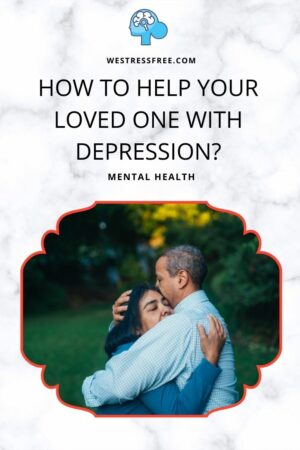

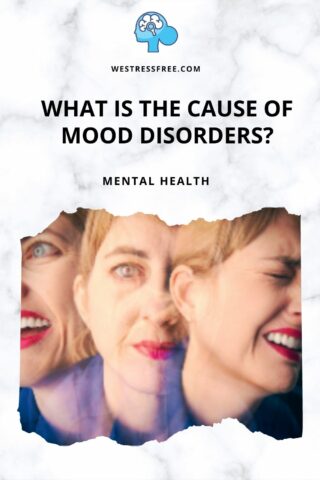
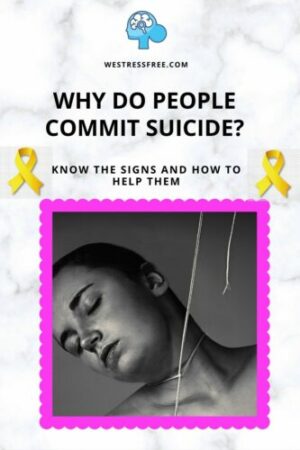


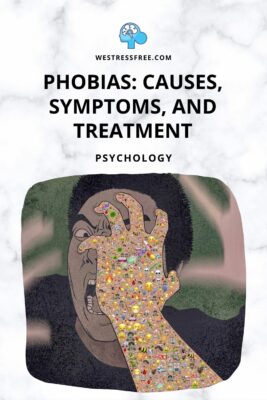

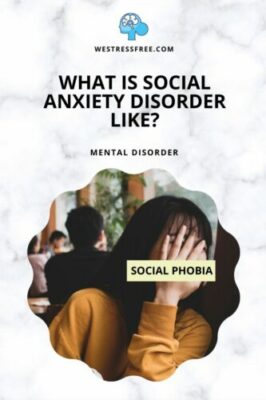



Hi Ferra,
This is such an important article on mood swings and disorders. I really needed to understand the genesis of such mood disorders, as I have a very close relative going through a particularly bad time. She has also been accessed as suicidal, and I need to do all I can to help. She is very young and has always been a loner. We are in contact with psychiatrists and taking advice regularly.
I am so happy that I found your article, Ferra. Thanks for the great information.
Aparna
Hi Aparna,
You are doing great in terms of helping your relative who experience mood disorders and also suicidal. I hope she can find the right treatment and get the quality of life she deserves.
Thank you for stopping by my website, reading the post, and leaving a kind comment.
I appreciate you for sharing your thoughts and support.
Glad to hear that you found this post useful.
Stay safe, happy, and healthy!
Ferra
A very insightful article! Amazed that there are so many mood disorders. I have personally witnessed a marrige that was destroyed by a mood disoder that was only diagnosed after the seperation. Treatment is also not a one time fix, as you rightly pointed out, because it can span a lifetime and it is very easy to suffer a relapse if the drugs taken are stopped. Great info on a little understood topic!
Hi Ceci,
You’re absolutely right. Mood disorders and other mental disorders could affect our relationships. So, we can’t take it lightly. We have to take care of it before it gets bad.
Thank you for stopping by my website, reading the post, and leaving a kind comment.
I appreciate you for sharing your thoughts and support.
Glad to hear that you found this post useful.
Stay safe, happy, and healthy!
Ferra
I have learnt that Symptoms of major depression may include:
Feeling sad most of the time or nearly every day
Lack of energy or feeling sluggish
Feeling worthless or hopeless
Loss of appetite or overeating
Gaining weight or losing weight
Loss of interest in activities that formerly brought enjoyment
Sleeping too much or not enough
There may be several underlying factors, depending on the type of the
disorder. Various genetic, biological, environmental, and other factors
have been associated with mood disorders.
Hi Lucas,
Thank you for stopping by my website, reading the post, and leaving a kind comment.
I appreciate you for sharing your thoughts and support.
Glad to hear that you found this post useful.
Stay safe, happy, and healthy!
Ferra
Hello, it is an amazing article you have here. I mean this is both creative and educative. I honestly thought that mood disorder just comes as a normal thing for humans little did I know that there is more to it now that I know about the causes and remedies am going to be more careful from now onward.
Thanks for sharing this with the public.
Hi Joy,
Thank you for stopping by my website, reading the post, and leaving a kind comment.
I appreciate you for sharing your thoughts and support.
Glad to hear that you found this post useful.
Stay safe, happy, and healthy!
Ferra
Mood disorders nowadays, seems to be increasing more, and we don´t have to think too much why. Most people don´t know where to look for solutions when your loved ones get depressed to suicidal thoughts, including headaches and difficulty in remember things. I mean, where to look for professional help.
Psychologist will help to get information of how severe are the symptoms, while psychiatrist can clarify a diagnosis. A symptom of headache could be anything in the brain, a psychiatrist could help by ordering a EEG and MRI. People usually live with depression and anxiety, they don´t go to a doctor until it is really too bad.
Thanks for clarifying in your post all the differences between the mood disorders, and their poles.
Hi Miselis,
Thank you for stopping by my website, reading the post, and leaving a kind comment.
I appreciate you for sharing your thoughts and support.
Glad to hear that you found this post useful.
Stay safe, happy, and healthy!
Ferra